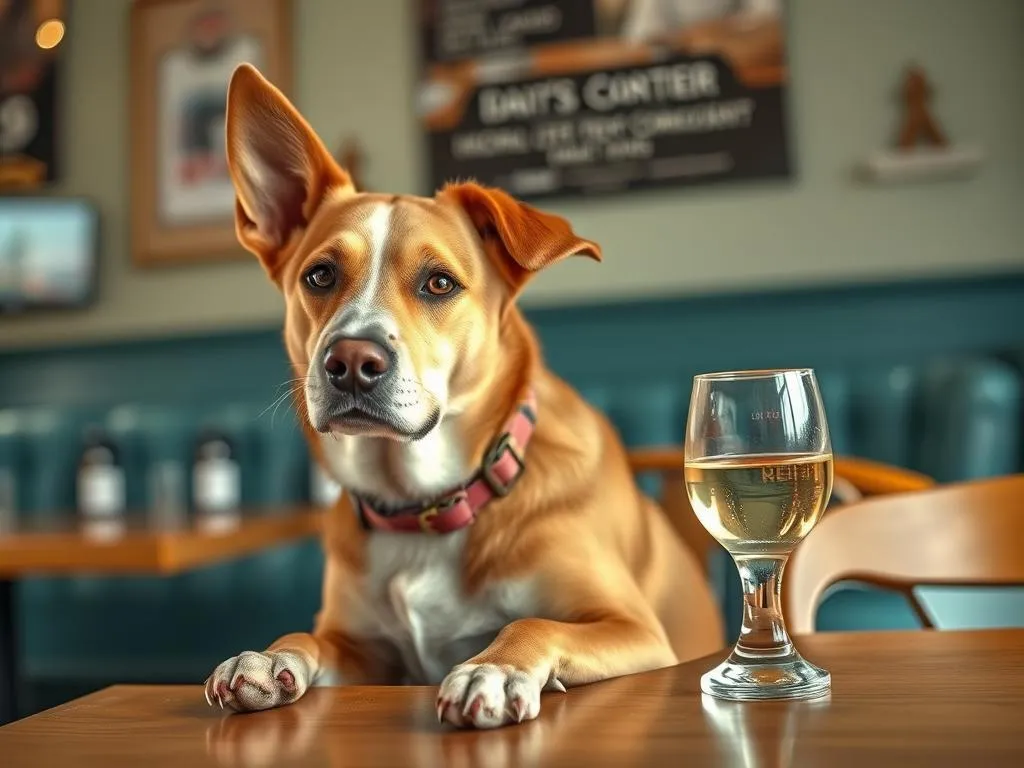
Introduction
Taking your dog out to a restaurant can be a delightful experience, offering a chance for socialization, bonding, and enjoying the outdoors together. However, it’s essential to teach your dog how to behave in public settings to ensure a pleasant outing for everyone involved. Training your dog to behave at restaurants is not just about avoiding potential disturbances; it’s about fostering a positive environment for both your pet and the diners around you. This article will guide you through the steps necessary to prepare your dog for restaurant visits, the training techniques to employ, and how to manage your dog’s behavior during your meal.
Understanding the Basics of Dog Training
Importance of Training
Training is the cornerstone of responsible pet ownership. A well-trained dog enhances the bond between owner and pet, promoting trust and understanding. When you teach your dog to behave properly, you’re not just preventing embarrassing situations; you’re also enriching their life with structured activities and clear expectations.
Key Training Principles
To ensure effective training, it’s vital to understand a few key principles:
-
Consistency: Regular training sessions are essential for reinforcing desired behaviors. Dogs thrive on routine, so make training a part of your daily life.
-
Positive Reinforcement: Rewarding good behavior with treats, praise, or playtime encourages your dog to repeat those actions. This method is far more effective than punishment.
-
Patience: Training takes time, and every dog learns at its own pace. Be patient and celebrate small victories along the way.
Preparing for Restaurant Visits
Assessing Your Dog’s Readiness
Before heading to a restaurant, assess whether your dog is ready for the experience. Look for signs such as:
- Mastery of basic commands like “Sit,” “Stay,” and “Come.”
- Calm behavior in different environments.
- A positive response to new people and dogs.
If your dog displays anxiety or aggression, it may be best to work on these issues before attempting restaurant visits.
Choosing the Right Restaurant
Select a dog-friendly restaurant that accommodates pets. Here are some tips to consider:
- Outdoor Seating: Look for places with patios or outdoor dining areas where dogs are welcome.
- Dog Policies: Ensure the restaurant has clear policies regarding dogs, which can usually be found on their website or by calling ahead.
- Atmosphere: Choose a location that is not overly crowded or noisy to minimize distractions for your dog.
Essential Equipment
Having the right equipment is crucial for a successful restaurant visit. Here’s what you’ll need:
- Leash and Harness: A comfortable, well-fitted harness helps control your dog without causing discomfort.
- Training Treats: Use high-value treats to reward your dog in a distracting environment. Soft, smelly treats often work best.
- Portable Water Bowl: Keep your dog hydrated during your visit with a collapsible water bowl.
Training Techniques for Restaurant Behavior
Basic Commands to Master
Training your dog to respond to basic commands is vital for good behavior in a restaurant setting. Focus on the following commands:
-
Sit: This command helps keep your dog stationary and calm. To teach it, hold a treat above your dog’s nose and move it back. When their bottom hits the ground, reward them.
-
Stay: Essential for preventing your dog from moving around the table. Start by having your dog sit, then open your hand in front of them and say “Stay.” Gradually increase the distance and duration before rewarding.
-
Down: This command can further help keep your dog calm and out of the way. Begin with your dog in a sitting position, then lower a treat to the ground and encourage them to follow it down.
Socialization Skills
Socialization is key to ensuring your dog is comfortable in public. Gradually expose your dog to various environments, including parks, cafes, and pet stores. This exposure helps them acclimate to different sights, sounds, and smells, reducing anxiety in new settings.
Desensitization to Common Distractions
Restaurants can be full of distractions, such as people, food, and noise. Here’s how to desensitize your dog:
- Identify Distractions: List common distractions your dog might encounter in a restaurant.
- Controlled Exposure: Start in a quieter environment and gradually introduce your dog to louder, busier settings.
- Reward Calm Behavior: Use treats and praise whenever your dog remains calm amidst distractions.
Practicing Calmness and Patience
Teaching your dog to remain calm is essential for restaurant visits. Begin practicing in controlled environments, such as your home or yard. Utilize the following techniques:
-
Mat Training: Teach your dog to settle on a specific mat or blanket. Reward them for staying on the mat during practice sessions.
-
Impulse Control Games: Use games like “Wait” or “Leave It” to reinforce patience, which can translate well to the restaurant setting.
The Day of the Restaurant Visit
Before You Go
Ensure your dog is ready for the outing with these last-minute tips:
- Practice Commands: Review basic commands at home to reinforce training.
- Feeding Schedule: Schedule your dog’s meal a few hours before your visit to reduce the chances of begging.
Arriving at the Restaurant
Upon arriving, take a few moments to assess the environment:
- Find a Suitable Spot: Look for a quiet corner or outdoor seating where your dog can settle comfortably.
- Introduce Your Dog Calmly: Allow your dog to observe the surroundings while remaining on a leash. This helps them acclimate without feeling overwhelmed.
Managing Behavior During the Meal
During your meal, keeping your dog occupied is crucial. Here are some techniques to manage their behavior:
- Chew Toys: Bring along a favorite chew toy or puzzle toy filled with treats to keep your dog engaged.
- Handling Unexpected Situations: If your dog barks or begins begging, redirect their attention with commands or treats. Avoid scolding, as this can increase anxiety.
Addressing Common Challenges
Dealing with Barking
Barking in restaurants can be disruptive. To address this behavior:
- Understand Triggers: Identify what causes your dog to bark. Is it excitement, fear, or attention-seeking?
- Training Techniques: Use commands like “Quiet” or “Enough” and reward your dog for calming down.
Preventing Begging and Stealing Food
To discourage begging, consider these strategies:
-
Teach “Leave It”: This command is essential for preventing your dog from snatching food. Start by showing them a treat and saying “Leave It,” rewarding them for ignoring it.
-
Avoid Feeding from the Table: Encourage good behavior by never feeding your dog from your plate, which reinforces the begging habit.
Handling Aggression or Fear
Recognizing signs of aggression or fear is crucial for a positive experience. If your dog shows these behaviors:
- Stay Calm: Your demeanor can influence your dog. Remain calm and assertive.
- Redirect Attention: Use treats or toys to divert their focus from the source of fear or aggression.
Building a Positive Restaurant Experience
Reinforcing Good Behavior
Immediate rewards for good behavior are essential in reinforcing positive actions. Use praise, treats, or playtime to reward your dog when they are calm and well-behaved during your visit.
Frequenting the Same Restaurant
Visiting the same restaurant regularly helps your dog build familiarity and comfort with the environment. This consistency can enhance their training and reduce anxiety over time.
Conclusion
Training your dog to behave at restaurants is a rewarding journey that enhances your bond and enriches your dog’s life. By following the steps outlined in this article—from understanding the basics of dog training and preparing for restaurant visits to managing behavior during your meal—you can ensure that both you and your dog enjoy a positive dining experience. Remember, patience and consistency are key. Share your experiences and tips in the comments section below, and enjoy your next outing with your furry friend!









